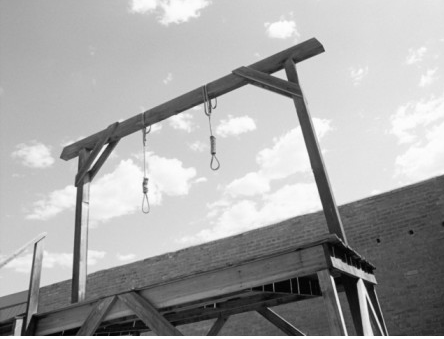
Currently, 32 states use the death penalty, but does it really accomplish its intended purpose?
Though a majority of Americans -- 55 percent -- support the death penalty for persons convicted of murder, more and more people in the U.S. aren't so sure, according to a 2013 Pew Research poll. Support for the death penalty has dropped by 23 percent since 1996, and new information is leading to renewed conversations around abolition.
Earlier this month, a study from the University of Washington found that jurors were three times more likely to sentence a black defendant to death as compared to a white defendant in Washington state, according to the Associated Press.
Revelations around inequality of sentencing are not the only complications to capital punishment. AP also reported that the EU's firm stance against the death penalty has led to European countries refusing to export execution drugs to the U.S., resulting in a shortage of drugs used for lethal injections.
As the debate about the death penalty wages on, it's time to take a closer look at capital punishment in the United States -- and separate fact from fiction:
Myth: The death penalty makes good fiscal sense. It costs less than paying for a convicted murderer to live out their natural life on the state's dime.
Truth: While the cost discrepancy varies from state to state, pursuing and issuing the death penalty is more expensive than imprisoning someone for life, according to Amnesty International. Conservative estimates by the California Commission for the Fair Administration of Justice determined that California could save $125.5 million annually by abolishing the death penalty.
Myth: Only the most heinous criminals are put to death.
Truth: Almost all of the inmates on death row were not able to afford to hire private counsel, according to Amnesty International. This means that the likeliness of ending up on death row is directly related to socio-economics, not the relative brutality of the crime. Race also plays a key role. Amnesty International notes that, 77 percent of death row inmates have been executed for killing white victims. This is grossly disproportionate considering African-Americans make up roughly half of all homicide victims.

Myth: We only use the death penalty when we are absolutely certain of a criminal's guilt.
Truth: Since 1973, 143 people have been released from death row, according to the Death Penalty Information Center. Each of these 143 individuals were either acquitted of all charges, had all charges dismissed by the prosecution or were granted a complete pardon based on evidence of innocence.
Myth: Use of the death penalty is a good deterrent for would-be criminals.
Truth: According to FBI data, states that have abolished the death penalty have homicide rates consistent with or below the national rate.

Myth: Lots of countries use the death penalty.
Truth: In 2012, 21 countries around the world used the death penalty, National Geographic reported. The United States ranked fifth in number of executions, coming in behind China, Iran, Iraq and Saudi Arabia, and ahead of Yemen and Sudan.
Myth: Lethal injection is the United States' preferred method of execution because it's humane and doesn't cause the condemned any pain.
Truth: There's split opinion within medical and legal communities on the pain experienced by the condemned during lethal injection, and whether or not it constitutes "cruel and unusual punishment" as prohibited by the Constitution. However, recent shortages of the drugs used in the lethal injection cocktail have forced states to try new, untested drug combinations. In January, 53-year-old Dennis McGuire experienced a prolonged 15-minute execution under an experimental two-drug cocktail, as reported by the Associated Press.

Support for the death penalty continues to drop. If you find yourself on this side of the issue, here's what you can do about it.
- Educate yourself by learning more about the issue at Death Penalty Information Center.
- Work with organizations working to abolish the death penalty in your state.
- Make your voice heard by submitting a video or written statement to the National Coalition to Abolish the Death Penalty's 90 Million Strong campaign.
- Donate to the Innocence Project -- which works to challenge old convictions with new DNA technology.

